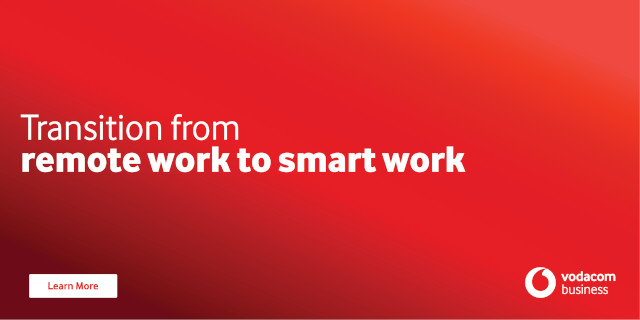Business News sponsored by Vodacom Transformation of Work:
By Tebogo Moleta, MD and Founder at Think Tank
Given the breakneck pace of change in business today, the significance of efficient customer and employee training cannot be overstated.
As companies strive to stay competitive, investing in the development of their people is critical. When it comes to partners and customers, companies need to make it as easy as possible to do business by engaging with their products and services in the broader value ecosystem.
Traditional in-house training methods, ranging from lengthy workshops to printed manuals, have proven inflexible and ineffective because they are challenging to track, and quickly become burdensome from both a financial and administrative perspective. To overcome these limitations, organisations are looking for technology-driven solutions, and white-labelled video-based learning platforms are quickly emerging as a progressive choice.
Activating the power of white-label video learning
Efficient training is synonymous with upskilling employees, empowering them to drive the business forward. Education is non-negotiable; it's an investment in human capital that ensures a company thrives. Traditional methods, such as in-person workshops, come with challenges like time dependency, limited access to instructors, and constrained resources. In-class knowledge transferral is restricted to the instructor's presence, leading to capacity limitations and spatial constraints.
The training blueprint is changing thanks to white-labelled video-based learning, which enables companies to develop branded, engaging, and customised onboarding and training programmes. The benefits are extensive, including enhanced employee and customer experiences, the cultivation of trust, and cost-effective training and skills development outcomes. Here, instead of reinventing the wheel and building their platform from the ground up, leveraging a third-party platform for in-house, white-labelled training can bring numerous advantages to organisations.
Elevating learning experiences for employees and customers
The transition to white-labelled video-based learning addresses these challenges directly. By leveraging an existing quality third-party platform, companies can leapfrog the hefty investment and time required to build a learning management system from scratch.
Within minutes, a fully branded solution can be implemented, offering a seamless experience for both administrators and users. Knowledge acquisition is not restricted by the presence of a lecturer, and subject matter experts can record video-based instructional content, which can be disseminated and monetised on such platforms.
From a customer and partner perspective, white-labelled video-based learning platforms ensure seamless engagement experiences by allowing businesses to customise and brand the training and self-service environment consistently.
With intuitive interfaces, multi-device accessibility, and efficient onboarding, such platforms offer a personalised and versatile training experience. Their scalability and cost-effective implementation contribute to a positive return on investment, while continuous support ensures an effective learning environment, in which the customer or partner has access to everything they need to utilise the product or service offered by the company.
Cost-efficiency and accessibility in video-based learning
One of the major advantages of white-label video-based learning is its cost-effectiveness. As mentioned, organisations can bypass the expenses associated with constructing a bespoke learning management system, by utilising a pre-existing platform.
The flexibility of such a platform allows for the easy integration of existing content or provides access to a library of pre-published courses, minimising the time required to launch training initiatives. Furthermore, the ability to customise content formats, including slides, PDFs, documents, images, and video snippets, ensures adaptability to various learning preferences. Individuals can access training materials at their convenience, promoting a culture of continuous learning through a user-friendly interface.
Preparing for future trends in training and education
As the face of education and training continues to evolve, organisations must stay ahead of future trends. On-the-move learning and micro-learning nuggets are becoming increasingly popular, providing motivated individuals with the flexibility to acquire knowledge at their own pace, anytime, anywhere.
Additionally, the rise of generative AI content creation presents an opportunity for more interactive and personalised learning experiences. The adaptability of white-labelled solutions allows businesses to stay abreast of future trends in education, making them a strategic choice for enhancing customer engagement and learning outcomes.
Utilising a white-label video-based learning solution is an astute way for businesses to align seamlessly with trends as they emerge, offering a convenient and adaptable platform for organisations to embrace the future of learning as it happens. A well-suited white-label platform can act as a strategic ally in the digital transformation journey by offering assistance to both conventional educational/training institutions and non-educational businesses, which helps to build a culture of ongoing learning.
Revolutionary strategic partnerships and opportunities
Businesses, both profit and nonprofit, can leverage white-label solutions to streamline their training processes, enhance employee skills, and contribute to the broader goal of continuous improvement, while educational content creators can share their knowledge and monetise their expertise.
Educational and training institutions can just as easily use such white-label platforms to reach new audiences that were previously inaccessible due to physical or logistical constraints. In short, by leveraging a suitable white-label video-based learning platform, businesses and institutions alike will gain a powerful tool to drive training and education to new heights.
By streamlining, personalising, and branding their training initiatives, organisations can stay ahead in the competitive landscape, playing an important role in establishing a culture of learning that is both efficient and future ready.






